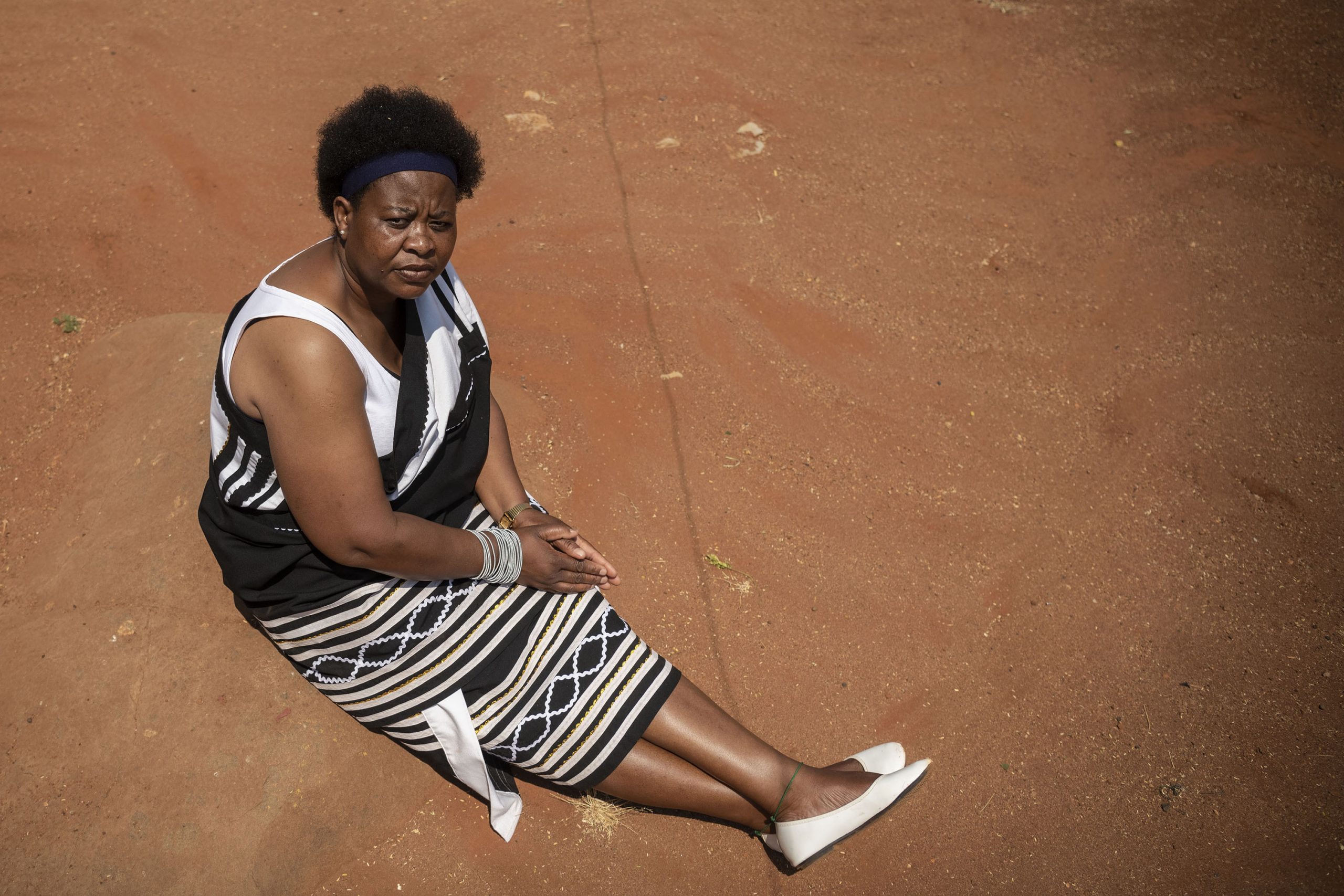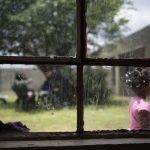Abuse shelters discriminate against women
Gender-based violence shelters need to provide immediate assistance to victims and survivors of violence instead of employing lockdown policies amounting to indirect discrimination.
Author:
3 June 2020

Over the past two years, the Centre for Applied Legal Studies (CALS) has represented dozens of women and their children against a series of unlawful evictions from a state-run gender-based violence shelter in Johannesburg. The shelter is the Gauteng Department of Community Safety’s “flagship” project which aims to be a “One Stop Centre for female victims of crime and violence”. Yet, the shelter has recently employed lockdown policies that frustrate the access individuals have to it. This amounts to indirect discrimination.
The purpose of a gender-based violence shelter is to secure immediate assistance to victims and survivors of violence in the form of psychosocial support, medical assistance and refuge. This is because gender-based violence, especially in the home, is relentless and may escalate in degrees of harm to the point where the lives of a woman and her children are in danger.
In 2016, the World Health Organization found that South Africa had the fourth highest rate of intimate partner femicide out of a study of 183 countries. With this in mind, the ideal situation would be that a woman and her children who have experienced violence at the hands of her intimate partner should be able to approach a gender-based violence shelter and gain access to the services listed above. When a woman and her children are turned away from a shelter, they are forced to either return to the abuser (and face further violence) or find an alternative place to stay which in many instances may very well be on the street.
Related article:
When policies around admittance or re-admittance into a shelter require a high burden on the victim or survivor, which in many cases cannot be met due to some of their intersecting vulnerabilities, then these policies ultimately act to turn individuals away and put them at further risk of harm by returning home or leaving them homeless.
Women denied access
In early March 2020, the shelter in question advised all women residing there that they should try to organise to stay with friends or family during the initial lockdown period to reduce their risk of contracting the virus. The women were guaranteed that their return to the shelter would not be frustrated and were even presented with “pass-outs” or permits to return to the shelter after the initial lockdown period. With the movement to less restrictive lockdown measures, one of CALS’ clients tried to return to the shelter. However, she was told that she would have to provide proof of a negative Covid-19 test to be allowed back in.
Although this may seem entirely reasonable, this may actually be an example of what our law calls “indirect discrimination”. Indirect discrimination can be described as occurring when policies (or regulations) appear to be neutral on paper but affect a disproportionate number of a certain group of people in a negative way. Section 9 of the Constitution explicitly prohibits unfair indirect discrimination. In fact, it even creates a reverse onus on the person against whom a claim of discrimination is made to show that the policy or regulation is not unfair discrimination, if it is based on one on the grounds set out in section 9(3) of the Constitution.
These grounds include race, gender, sex, pregnancy, marital status, sexual orientation, age, disability, belief and culture. These are primarily informed by acknowledging the groups that have historically faced discrimination in our country. Our courts have further recognised that these factors often manifest in intersecting ways, which creates additional vulnerability for people in overlapping groups. Women who suffer gender-based violence are an example of this intersection of marginalisation as they are often young, black and economically disadvantaged.
Related article:
For the shelter’s policy to be an example of indirect discrimination it must be shown to affect a certain group, who fall under section 9(3), in a negative or unfair way. Women who seek the services of gender-based violence shelters as stated above are some of the most vulnerable individuals in our society with their levels of intersecting vulnerability located under numerous grounds under section 9(3) of the Constitution such as gender, sex, race and ethnic or social origin and age.
The question then becomes how can requiring an individual to produce a negative Covid-19 test result be an action that discriminates against a certain group in a negative way? When we ask that a woman entering or re-entering a gender-based violence shelter shows proof that she is not ill, we are constructively prohibiting her entrance and denying her assistance based on the vulnerable group she belongs to. This is because of the very factors that bring her to the shelter in the beginning, including being economically disadvantaged.
Studies, including a recent report by Tshwaranang, have found that a majority of Gauteng women entering the shelter system were unemployed and were not supported by their partners despite also having children to care for. Another study by the Heinrich Böll Foundation also supports this and found that over 50% of women in shelters in Gauteng, Mpumalanga and the Western Cape were unemployed and relied solely on social grants. If these women had alternative options, they would not be at shelters.
Complicated virus test
Another factor is the very nature of gender-based violence in the home: it is relentless and escalating in its very nature. Because of this, women and children who successfully escape what can be described as “terrorism in the home” require immediate assistance in the form of psychosocial support, medical assistance and, importantly, a place to stay. There is no option of waiting because this means they must return to a situation that could result in their death.
Now when we ask these women to get tested for Covid-19 before they can enter or re-enter a shelter, there are two primary issues. The first is that testing is not immediate and thus if the woman is trying to escape a violent situation, she may have to return to that situation to wait for the outcome of the test. Naturally, this defeats the purpose of a gender-based violence shelter as being an immediate or urgent place of safety.
The second issue is the assumption that the individual can go and get a Covid-19 test at that very moment and for no charge. With most individuals attempting to gain access to shelters being economically disadvantaged they cannot approach the private sector for a test as they cannot afford to do so. Furthermore, when women entering shelters are commonly accompanied by their children then the woman would have to pay for tests for her children too.
Government testing may be an option, but, with limited numbers of tests available at any given point, the individual woman may not necessarily have immediate accessibility to public testing. The consequences is that no matter what course is taken, private or public testing, the emergency access to the shelter and its services are not possible as being tested and getting results takes time.
Related article:
Consequently, what we encounter is a policy that may very well have good intentions but inadvertently denies women and children the right of access to gender-based violence shelters and services. Instead, it sends them back to endure abuse in the home until they can potentially get tested.
There are certain ways that the purpose of the policy can be achieved in a less limiting way. For example, the shelter can employ a checklist screening system around the likelihood that the individual may have come into contact with a person suffering from Covid-19 or is suffering from any of the symptoms related to the disease. This is currently being employed in many of our magistrates’ courts. Yet, ultimately a state-run gender-based violence shelter should be referring individuals who have a likelihood of infection to state-run testing facilities. This is a case that emphasises the lack of communication and cooperation between the state departments themselves, which leaves victims of violence with the highest burden in this situation.
Ultimately what we see is that the policies enacted here are working against the people who need the shelter services. And when a policy does this and discriminates against a constitutionally acknowledged vulnerable group to such a degree as to negate a right to assistance the policy cannot be lawful and should ultimately not be enforceable.



